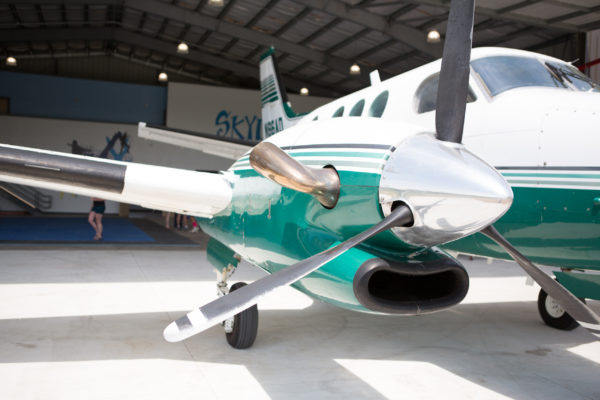How to Exit a King Air
Monday, September 17, 2018

Editor’s Note: information shared is not designed to replace wingsuit coaching but to help with preparing for your first flight and coaching classes. Be sure to train with a wingsuit coach on all techniques.
Exiting a King Air can be intimidating for wingsuiters. Air speed is high and the tail is low, leaving a smaller margin for mistakes and a higher risk for tail strikes. The fundamentals of exiting a King Air are the same as any other side door airplane though, it’s just more important to do it correctly and avoid some of the common mistakes that are not as big of a deal under different circumstances. Let’s go back over the basics required for a safe and solid exit – proper air plane configuration, and proper body configuration.
Proper Airplane Configuration
Before you get out of the plane, it’s important that there has been polite communication with the pilot and he/she knows how to safely configure the aircraft for a wingsuit friendly jumprun. Remember, ultimately it is up to the wingsuiter to exit or not. When checking for a safe jump run, remember these 3 things: look, listen, feel.
• Look – Look at the gauges, it the airspeed appropriate? Can you see the flaps down?
• Listen – Can you hear the engine cut?
• Feel – Can you feel the plane slow down? What is the deck angle? It is important that the plane isn’t pitched high which lowers the tail.
Proper body configuration
As soon as we cross the threshold from the shelter of the airplane to the blasting of the wind, we need to have our body in the correct configuration. Imagine that the wall of air about to hit you is like a wall of water coming from the direction that the airplane is traveling – our relative wind. We need to be as streamlined as possible. If you were to let a wave hit you while you were standing upright, it’s going to knock you backwards because you are presenting too much drag/surface area. This is similar to exiting in a head/chest high configuration – too much drag is presented and it’s going to give you lift backwards and up towards the tail.
• Exit chest-low, aerodynamically into the relative wind with wings closed

Things to avoid
Common mistakes that are especially important to avoid when exiting an aircraft with increased tail strike potential
• Avoid opening wings too soon
• Avoid jumping up
• Avoid exiting with a chest high orientation to the relative wind
Additional tips for exiting a King Air
Since the airspeed is so high, any increased time between jumpers on exit is going to cause greater separation than on a lower airspeed jumprun. To help minimize space between jumpers:
• Prior to exit while still in the airplane – keep torso vertical by keeping your hips lower, bend from the knees so jumpers can stack much closer together (only while in the airplane, do not exit with a vertical torso!).
Don’t get psyched out
Exiting a King Air is the same mechanically as an Otter, just take a deep breath and remember the fundamentals. Check your aircraft configuration, body configuration, and exit down with wings closed.




